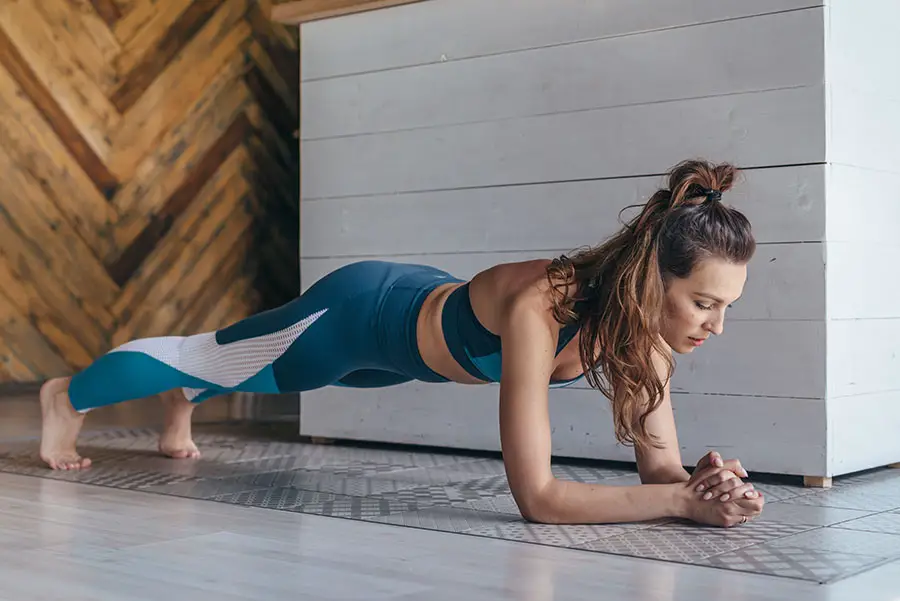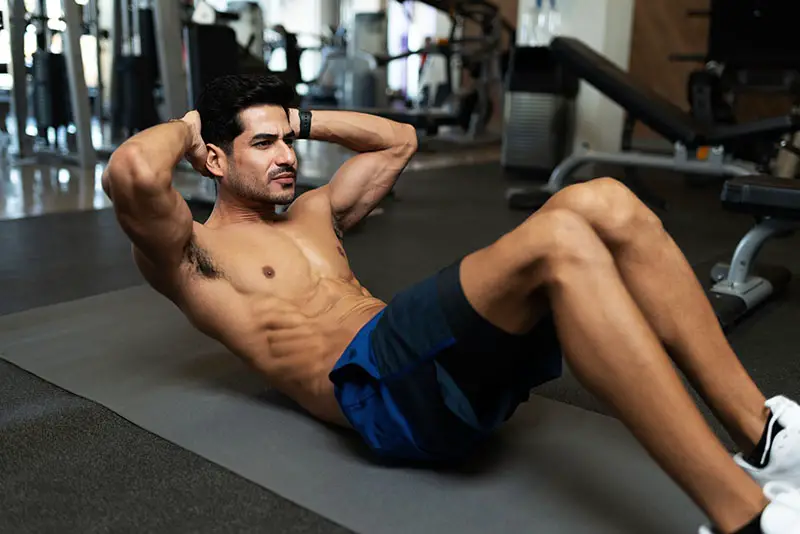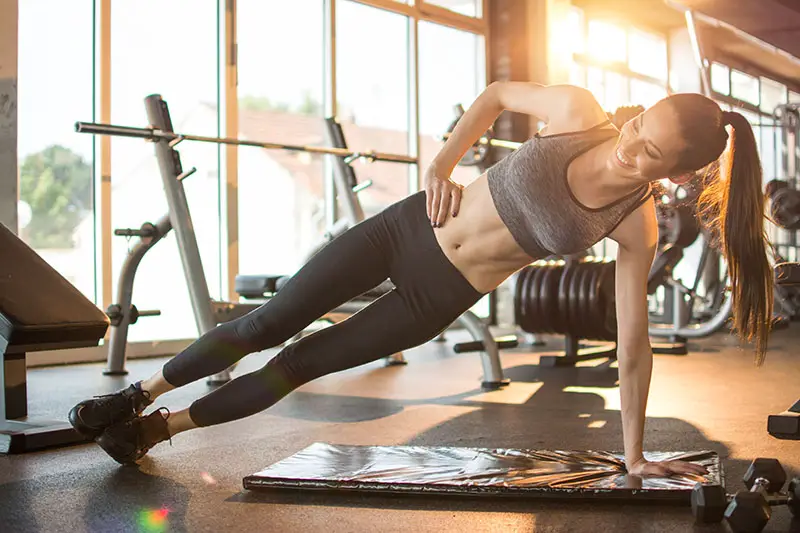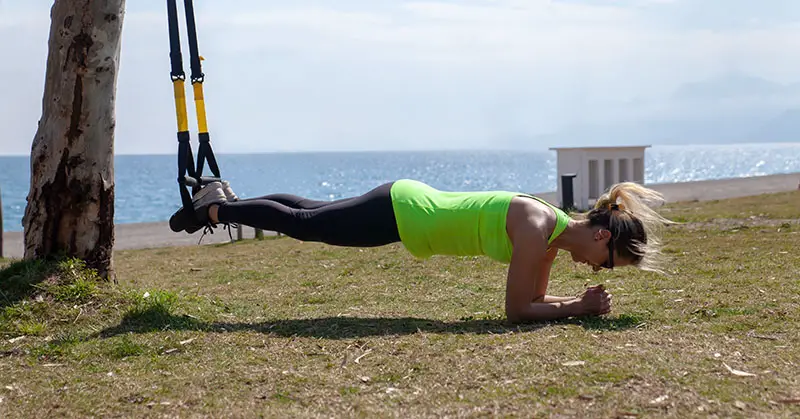Contents
Planks vs Crunches
We all workout for various reasons. Your why may differ from the next person you ask. Some people workout to achieve certain aesthetic goals, some people work out for their mental health, and some just want to maintain an overall healthy lifestyle. You may be into a specific sport and work towards goals specific to that.
I feel like most of us have desired a toned, strong core at some point in our lives. You may even want those shredded abs that pop like you see on the television or in magazines. I know that I’ve always tried to tone up my abdominals. This seems to be an area that receives extra focus around those warmer months. You might spend more time by a pool or at the beach and just want to feel good outside in whatever you are wearing.
What is going to help strengthen your core the best? Are planks vs crunches better for working your core? Both are very popular exercises, but is one better than the other? Let’s explore those burning questions and see what it takes.
In 2013, the Les Mills Research team found a plank achieves 20 percent more activation than a crunch.
What is a Plank?

A plank is getting into a push-up position and holding that pose for a specified amount of time. This is an isometric (static hold) exercise. This works your complete core. There are a lot of muscles that are engaged during this exercise.
In order to perform a plank, place both hands shoulder width apart with your arms extended and chest lifted off the ground. Create a long spine from your head to your feet where you are on your toes. Keep your body lifted and your form from shifting. Hold this static position from 15 seconds to several minutes. Just be sure to maintain proper form. If you need to drop and rest, do so and jump back into your plank position.
What is a Crunch?

A crunch is an isolation exercise that primarily targets the rectus abdominis muscles and the obliques.
In order to perform a proper crunch, begin by laying with your back on the floor, your knees bent, and your feet flat on the floor. Place your hands behind your head and keep your elbows back. Next, using your abdominal muscles, lift your upper body towards your legs as far as you can. Keep your core engaged and your belly button pulled in. Lower back down and you will have completed one repetition.
Why are Planks Better?
Simply put, planks develop your entire core and not just your abdominals. This makes it a winner in the great planks vs crunches debate. Doing a plank targets your abs, obliques, shoulders, lower back, and glutes. This will improve both strength and stability. The crunch is an isolation exercise and will target your abdominals and obliques, but won’t engage your entire core or arms. Also, performing crunches repeatedly can put more strain on your spine. This may lead to injury if performed incorrectly.
If you are just starting out, aim to do 3 sets of 30 second holds. You can slowly progress from there and build up to a full minute. Eventually, you will also be able to add in some harder variations.
Plank Variations
You may be hesitant if you’re a beginner or returning to working out after a long time off, but there are many variations when doing a plank that can benefit everyone. From beginners to those that are more experienced, there are many ways to spice up your plank game.
Here is a list of great plank variations:
Forearm Plank Knees on the Ground
This is perfect for the ultimate beginner or anyone who struggles to maintain suitable form in other plank variations. Build up from here. Start by being able to hold for about 30 seconds.
Forearm Plank
May be easiest for beginners. It’s also easier if you have wrist pain or weakness. Instead of being in a push-up position, you will bend your elbows and place your forearms flat on the floor.
Standard Plank

Place your arms shoulder-width apart. Keep your body long from head to toe and keep your core tight.
Shoulder Reach or Tap Plank
Set up in standard plank position, but lift one hand up at a time in either a forward reach or to tap the opposite shoulder.
Hip Dip Plank
Set up in the forearm plank, but twist and lower one hip to the floor and return to a regular position. Then repeat on the opposite side.
Side Plank

You can do a side plank with either extended arms or on your forearms. There are also further options such as bent knees or straight legs.
Windshield Wiper Plank
You can do this in either standard or forearm plank position. Place plates or sliders under your feet, sweep one leg out and back in and repeat on the other side.
TRX Suspension Plank


Having your feet suspended in the air with a suspension system requires greater strength to stabilize your body.
Rocking Plank
Standard or Forearm position. You can rock forward slowly and rock back.
Bosu Ball Plank

Using a bosu ball with the rounded side down, grab the edges of the flat side. Lift yourself into a standard plank position. Balance on the bosu ball while holding the plank. This exercise is challenging. It will require more stabilization from your core and be a little more work on your shoulders and arms.
Planks vs Crunches – Which Should You Be Doing?
It really very much depends on your goals when deciding whether to do planks vs crunches. There is no reason that you can’t incorporate both into your routine. If you are a bodybuilder and looking for isolated sculpting, you may need to add in more crunches to achieve your desired results. If you are looking to rehab from an injury to your wrist or shoulders, crunches will be the best choice as well because there is a lot of weight placed on your wrist and shoulders during a plank.
When doing crunches you also can add in weights to further increase your muscle building potential. You can’t do that as well with a plank. Another reason you could benefit from both instead of choosing planks vs crunches is maybe you enjoy one exercise more than the other. Planks can be a bit of a mental challenge with you holding your static position and only staring at the floor, so it is good there are variations that you can do.
By incorporating both planks and crunches, you will see benefits from each of the exercises. This will improve your overall strength and core stability. Both exercises are easy to squeeze into your day. You can do a few quick planks first thing in the morning or whenever you have a break. The same is true of crunches. It can be a part of your daily routine, every other day, or just thrown in with your usual workouts.
Our cores are essential for so much of our daily movement. A strong core can help reduce back pain, it helps with posture, walking, running, and jumping. Having a strong core will also help reduce your chances of injury. If you have weak core muscles, other muscles may overcompensate and can become injured.
It’s not all about the looks. Even if your muscles aren’t ripped and you don’t maintain a super low body fat percentage, you can still develop a strong core. You can still strengthen those muscles with planks vs crunches, and you will benefit from these movements.
Wrap-Up
In the battle between planks vs crunches, planks win. Planks help to develop your entire core and not just your abdominals. Planks are also better for your back when compared to crunches. However, consider your goals when deciding between planks vs crunches.
We covered 10 plank variations that you can use into your workouts. With that many variations, you shouldn’t get bored! Also, there is no reason that you have to choose between planks vs crunches in your workout. Work both exercises in to get maximum results!
